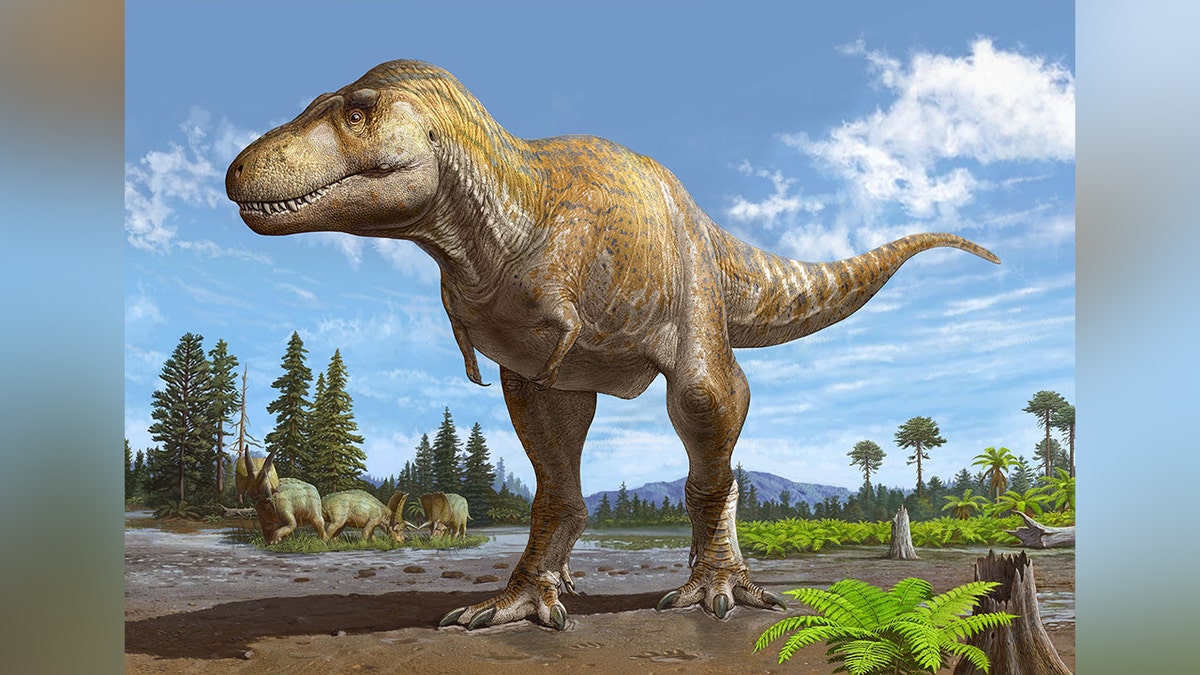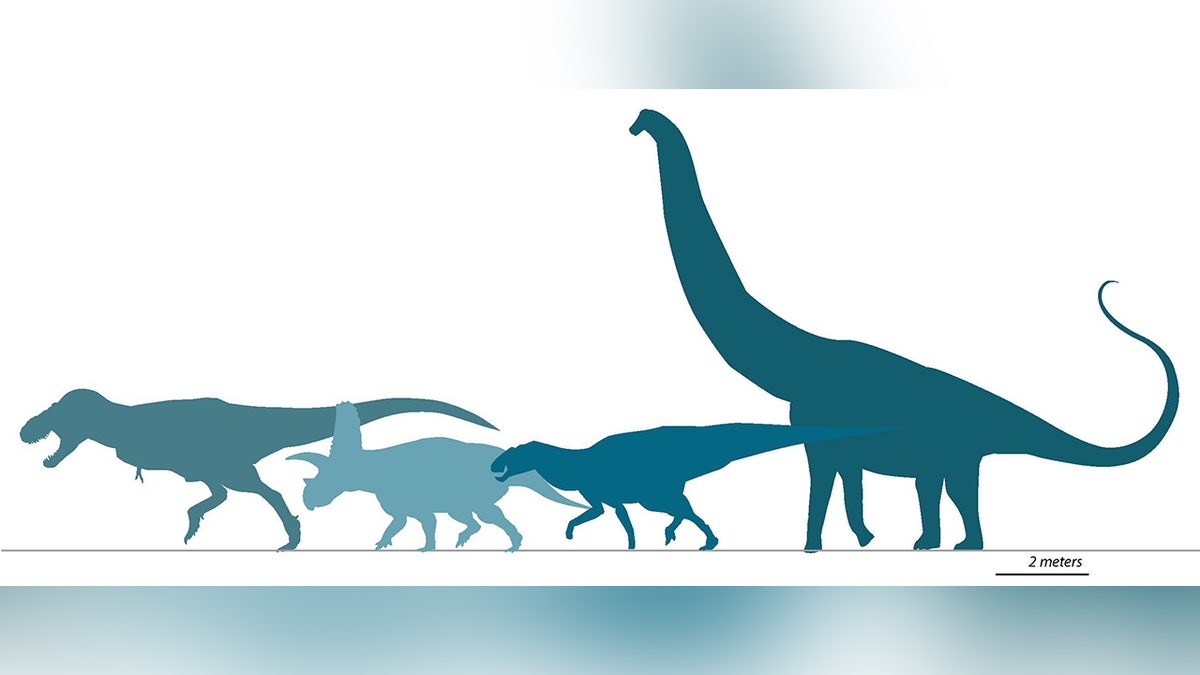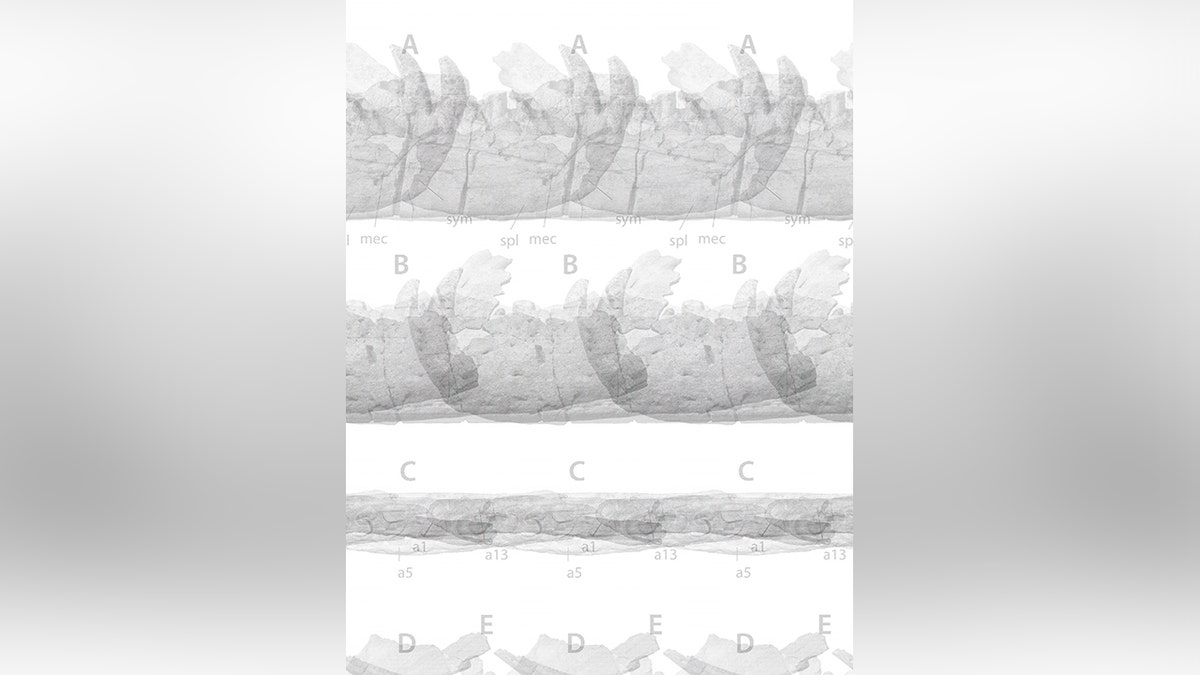113-million-year-old dinosaur tracks revealed after severe drought conditions plague Texas
Steve Brusatte of the University of Edinburgh discusses the conditions which led to a unique discovery of 113-million-year-old dinosaur tracks in Texas.
A team of researchers, including those from the New Mexico Museum of Natural History and Science (NMMNHS), say the discovery of a new dinosaur subspecies is believed to be a more primitive and older relative of the Tyrannosaurus rex, reshaping the scientists’ understanding of how and when the beast first arrived in North America.
In a study published in the journal "Scientific Reports," the team identifies a newly discovered subspecies known as Tyrannosaurus mcraeensis, a predator shown to be older and more primitive than the T. rex, and just as large.
The discovery of a partial skull found years ago in western New Mexico led to the study, which shows the Tyrannosaurus was in North America millions of years before paleontologists previously thought.
"New Mexicans have always known our state is special, now we know that New Mexico has been a special place for tens of millions of years," Dr. Anthony Fiorillo, the executive director of the NMMNHS said. "This study delivers on the mission of this museum through the science-based investigation of the history of life on our planet."
WHAT WE THOUGHT WE KNEW ABOUT T REX WAS WRONG, RESEARCHERS SAY IN NEW STUDY

A rendering by artist Sergey Krasovkiy of Tyrannosaurus mcraeensis, a newly discovered relative of T. rex. A partial skull on view at the New Mexico Museum of Natural History & Science was a key part of the discovery. (Courtesy of NMMNHS / Sergey Krasovkiy)
Along with the NMMNHS, researchers from the University of Bath (UK), University of Utah, George Washington University, Harrisburg University, Penn State Lehigh Valley and the University of Alberta participated in the study.
The museum said in a press release that the T. rex, which is perhaps the largest and most dangerous terrestrial predator of all time, "suddenly appeared" in North America about 66 million years ago.
When it arrived, the press release noted, there were no close relatives of the T. rex in North America, so how it arrived and evolved there is a mystery.
DINOSAURS MAY HAVE BEEN KILLED OFF BY 'APOCALYPTIC DUST PLUME': STUDY

A diagram illustrating the size of the newly discovered Tyrannosaurus mcraeensis. The tyrannosaur is roughly the same size as its famous relative T. rex. (Courtesy of NMMNHS)
Co-author Sebastian Daman was a student in 2013, when he began to reexamine species collected from southern New Mexico.
"Soon we started to suspect we were onto something new," he said in the press release.
What he and other researchers learned was that T. mcraeensis was about the same size as T. rex and also ate meat.
EARLY MAMMALS MAY HAVE HUNTED DINOSAURS, RARE CHINA FOSSIL SUGGESTS

The jawbone of Tyrannosaurus mcraeensis, a newly discovered relative of T. rex. (Courtesy of NMMNHS)
The research also showed that subtle differences in the jaw bones make it unlikely that T. rex was a direct ancestor, but it raises the possibility that there are more discoveries to be made about tyrannosaurs.
"Once again, the extent and scientific importance of New Mexico’s dinosaur fossils becomes clear — many new dinosaurs remain to be discovered in the state, both in the rocks and in museum drawers!" Dr. Spencer Lucas, paleontology curator at NMMNHS said.
CLICK HERE TO GET THE FOX NEWS APP
The discovery also expands the researchers’ understanding of the dinosaur species, suggesting that tyrannosaurus lived in what is now the southern U.S. at least 72 million years ago, and likely originated there before moving into the western portion of North America.

